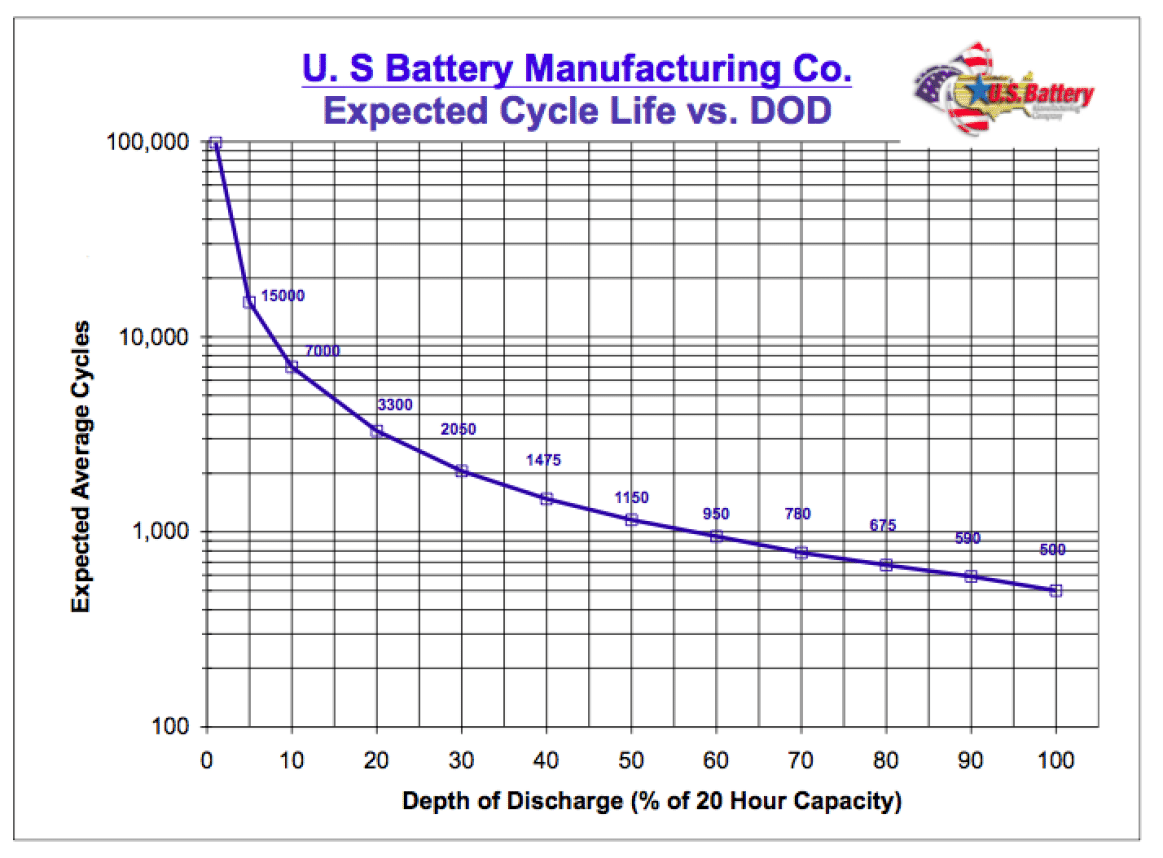Thanks Vic, please “more later” I have a company in Reno upgrading my original 2015 Hawk AGM setup to LiFeP04 in April. Between now and then I’m trying to become as knowledgeable on the subject as possible. And thanks to everyone on the forum for their input over the last couple months.
Brian
Questions regarding "So, you want to setup a good electrical system in your camper?"
#1

Posted 01 February 2021 - 07:07 PM
2018 Ram 3500 Mega Cab 4x4 Diesel, 2015 Hawk Silver Spur Exterior, Front Dinette
#2

Posted 01 February 2021 - 09:57 PM
Thanks Vic, please “more later” I have a company in Reno upgrading my original 2015 Hawk AGM setup to LiFeP04 in April. Between now and then I’m trying to become as knowledgeable on the subject as possible. And thanks to everyone on the forum for their input over the last couple months.
Brian
Brian, What company in Reno ? And which components and brands are you having installed ?
I am trying to install a solar and Lithium battery system in my 2006 Hawk. It is an adventure to be sure.
Thanks to Vic and Rando, and countless others I am learning.
Thanks
Fred
A.Smith
#3

Posted 02 February 2021 - 06:15 AM
Please post your questions here instead of in the main thread.... thanks!
2012 ATC Puma Shell build - https://www.wanderth...012-puma-build/
Power considerations thread - https://www.wanderth...e-power-scotty/
Building out an electrical system - So, you want to setup a good electrical system in your camper? - Electrical, Charging, Solar, Batteries and Generators - Wander the West
#4

Posted 02 February 2021 - 06:26 AM
A. Smith, the Reno company is:
www.sixguntwelvevolt.com
Zero Declination
They will be installing one or more Battleborn batteries, Victron Orion-Tr 12/12 Volt, 30 amp, DC/DC Charger, MPPT 100v 30 amp 12 Solar Charger and the 712 monitor. Plus 4 gauge wire from engine to camper.
Edited by BrianG, 02 February 2021 - 06:36 AM.
2018 Ram 3500 Mega Cab 4x4 Diesel, 2015 Hawk Silver Spur Exterior, Front Dinette
#5

Posted 02 February 2021 - 07:08 AM
Very clear write up, Vic!
You may not realize how much value you bring to the forum with your concise and informative writeup.
We've also upgraded to a 100ah LiFePo4 after going through two AGM batteries in ten years on our 12 year old camper.
Luckily our MPPT solar controller and FWC Iota charger were compatible with minor adjustments, so it was plug and play.
DC-DC chargers are certainly an interesting option.
I'm bookmarking this thread for future builds.
2021 RAM 3500 Crew 4x4, 6.4 hemi/8 speed trans with 4.10 gears, Timber Grove bags, Falken Wildpeak 35" tires.
OEV Aluma 6.75 flatbed, Bundutec Odyssey camper on order for 2024
For this year we're still using our 2008 FWC Hawk with victron DC-DC charger, 130w solar, MPPT controler
with 2000w inverter and external 120v output and 12v solar input with 100w portable solar. http://lighthawkphoto.com
#6

Posted 02 February 2021 - 03:18 PM
Is the 50% 'usable capacity' the right guideline for a truck camper?
One comment or point of discussion for the 'How Much Battery do I Need' post - I know that only using 50% of your lead/AGM battery is a common rule of thumb, but I am wondering if it is the best guidance for a truck camper in which weight is an important consideration? The 50% guidance is based on an economic balance between the life of the battery (the deeper you discharge on each cycle, the less cycles you get) and usable capacity. It doesn't really take into account weight and the fact that you are only using half the battery you are hauling around.
Based on a typical AGM depth of discharge vs cycle life curve, then maybe going to 80% makes more sense in a truck camper, particularly if you aren't living in it full time. For a weekend warrior who does a ten 3 day trips a 3 two week trips a year (~65 nights per year) then even using 80% of the battery could yield ~650 cycles and 10 years of use. It is also important to note that other things can also reduce the battery regardless of depth of discharge - delayed recharge after use, high temperatures, and old age (calendar life) so regardless of the number of cycles a battery will typically only last 5 - 8 years in 'average' use.
Going to 80% DOD gives you 60% more usable capacity essentially for free in terms of weight. For a heavier user, the battery may only last 4-5 years a 80% DOD rather than 8-10 years at 50% DOD, but you also only had to buy one battery, so the economics aren't that different.

Source: https://www.cedgreen...battery-systems
2016 Fleet Flatbed
2016 Toyota Tacoma
#7

Posted 02 February 2021 - 03:41 PM
A. Smith, the Reno company is:
www.sixguntwelvevolt.com
Zero Declination
They will be installing one or more Battleborn batteries, Victron Orion-Tr 12/12 Volt, 30 amp, DC/DC Charger, MPPT 100v 30 amp 12 Solar Charger and the 712 monitor. Plus 4 gauge wire from engine to camper.
Brian, Looks like a quality build. And must admit you will be on the road much sooner than I. Doing all myself means lots of time, and mistakes, oops I bought 10 gauge, I wanted 8 gauge, Enjoy the Travels
On the Adventures
Fred
#8

Posted 02 February 2021 - 07:41 PM
I agree with you completely rando. Details like this are important, and may also confuse the folks new to battery systems. I also wonder about this chart... as it indicates we can expect 500 cycles if we flatten (drain to 0%) the batteries every time. That seems overly optimistic. Now, that could be because I live in a cold climate and a dead battery will freeze, and the freezing will kill a battery for sure.
I'm open to revising my post to say "50% to 20%" SOC for lead acid batteries, yet I wonder why the "standard" I see stated most often is 50%?
2012 ATC Puma Shell build - https://www.wanderth...012-puma-build/
Power considerations thread - https://www.wanderth...e-power-scotty/
Building out an electrical system - So, you want to setup a good electrical system in your camper? - Electrical, Charging, Solar, Batteries and Generators - Wander the West
#9

Posted 02 February 2021 - 09:53 PM
I expect ten years of battery life because I rarely go below 85% S.O.C However having the amp hours to accomplish this also means that when I do run into days of bad weather I'll have enough power without having to fire up the engine or run a generator to avoid running my batteries too low. I do suffer a weight penalty to accomplish this but since I have a big heavy diesel this isn't an issue. If I were driving a half ton truck I'd definitely want to spend the extra for a lithium phosphate battery.
The 50% number is certainly arbitrary but I think its a reasonable compromise. I really like having a large reserve but if that isn't a concern you certainly could save some money with a single battery.
Wouldn't a longer life span also be a little more environmentally friendly?
Craig K6JGV_________________________ 2004 2500 CTD 4X4 FWC HAWK 1960 CJ5
#10

Posted 03 February 2021 - 12:34 AM
One thing to remember is that running the battery down to 0% SOC does NOT mean 0 volts, it is pulling the rated capacity (which will decrease over time) out of the battery. Typically this means taking the resting voltage down to about 10.5V.
I agree that the USBattery chart seems a bit optimistic, but I think it is for true deep cycle AGM, not the dual purpose or marine AGM that most FWC come with. Either way, the idea holds - maybe you get 600 cycles at 50% DOD and 350 at 80% DOD, the curve looks about the same.
I agree with you completely rando. Details like this are important, and may also confuse the folks new to battery systems. I also wonder about this chart... as it indicates we can expect 500 cycles if we flatten (drain to 0%) the batteries every time. That seems overly optimistic. Now, that could be because I live in a cold climate and a dead battery will freeze, and the freezing will kill a battery for sure.
I'm open to revising my post to say "50% to 20%" SOC for lead acid batteries, yet I wonder why the "standard" I see stated most often is 50%?
2016 Fleet Flatbed
2016 Toyota Tacoma
0 user(s) are reading this topic
0 members, 0 guests, 0 anonymous users














